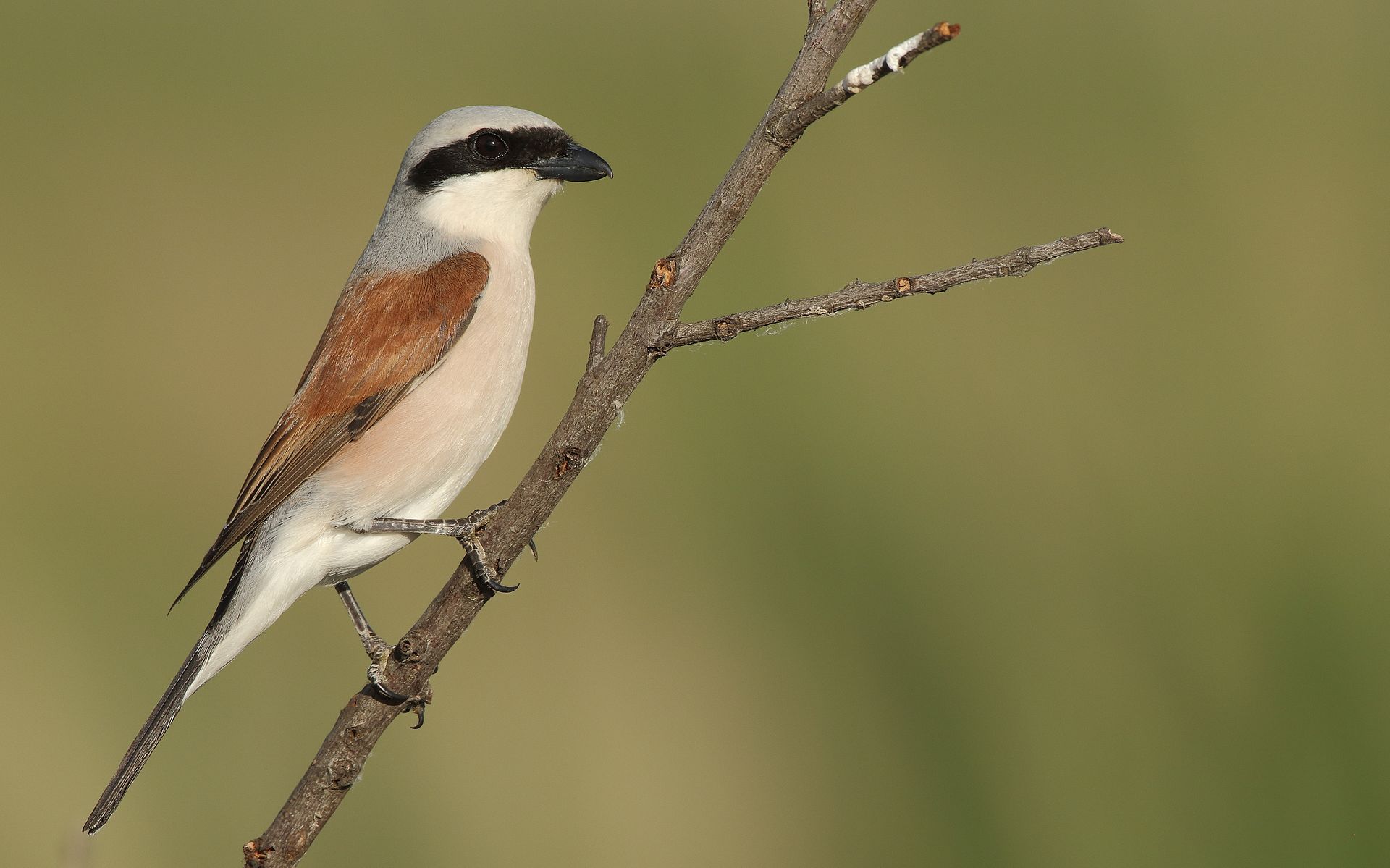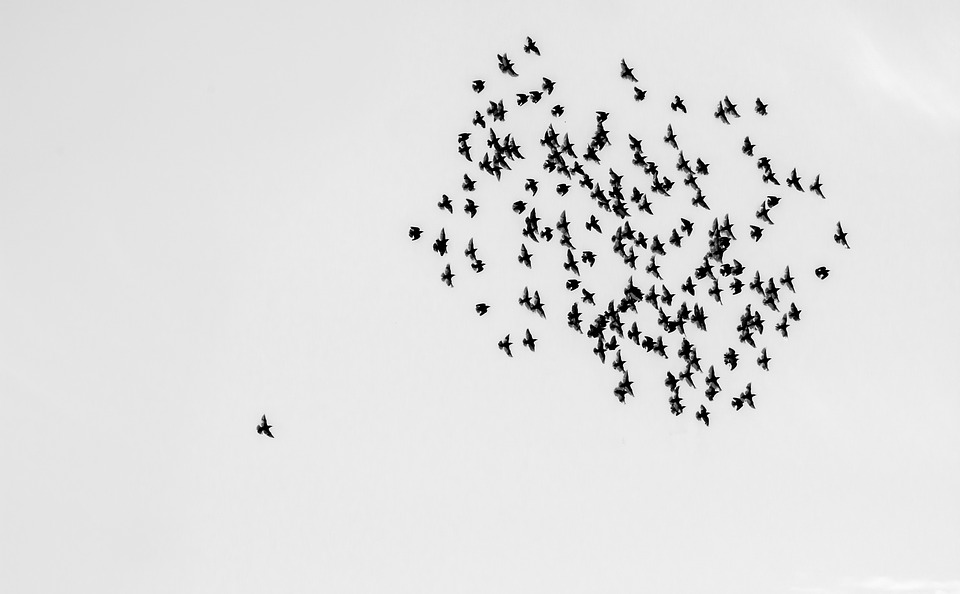Elemental Shrike
Run. Run. RUN!
What a cute little bird...Saltwater crocodile. Black mamba. Golden poison dart frog. These are all just victory notches in its belt, dead impaled creatures it keeps as food. The experience can be described as follows: a sharp blow to the head, the flutter of wings, unconsciousness, death. Originally developed as an assassination weapon on the homeworld of humanity (Earth), several of these birds snuck aboard the cargo hold of the escaping lesser gods and survived by using their beaks to bash open food crates. When they finally arrived on the planet and terraformed it, the shrikes injured crew members and were only repelled with a release of their favorite frog, which they immediately skewered as the crew fled the area. When they came to Ironfoot, they underwent a small-scale evolution that allowed the birds to sequester luck and use it for their own purposes, earning them the title Elemental. For example, when shrikes attack, the wind always seems to blow as a tailwind. Frightened animals drinking at a drinking pool have seemed to get drowsy from the water. The bird's plumage seems to be enhanced, cuter, when in attack. Details about this species is not well determined, due to their aggressive nature. The common wisdom seems to be, if you see them, run.– Last words of Colonel Aribund
Basic Information
Anatomy
The anatomy is quite similar to the red-backed shrike (Lanius collurio), with a russet, dried-blood color on their backs and a white stomach. Their heads are topped with silver, like it is wearing a war-helment, and the wings are silver on the bottom and dark red on the top, giving the impression of swords that are bloody on one side.
More information on this shrike's predecessors can be found in our databases. These shrikes were specifically modified by the lesser gods for assassination, so they were larger than the database describes and most importantly forms into packs of animals for quick and easy killing of prey. Also, their eyes are larger than normal birds, mainly acting to make them look cute so that their prey gets baited.
Genetics and Reproduction
The species reproduce with eggs, put in simple cup-shaped nests placed in low tree branches or bushes. These eggs are guarded by the young of the pack, who collectively bring up the babies and indoctrinate them with the shrike killing spirit. The young also practice shrike pack-hunting: killing any and all things that attempt to steal shrike eggs.
Dietary Needs and Habits
Bird eat human, bird eat snake, bird eat crocodile.The bird generally eats small frogs, chicks, mice, rats, and insects, which it kills with a sharp beak-blow to the head. However, as a pack, it has the potential to knock unconscious and brutally gouge any large animals that venture within its territory, including bears, tigers, lions, alligators, waterfowl, and even humans. As such, humans usually try to keep their distance from shrikes.– Villager, describing shrike attack
Additional Information
Social Structure
The birds have a pack mentality, working with a specific head couple of shrikes, named the alpha, to systematically take down prey. The hierarchy is divided further down, with the highest ranking couples working as 'bodyguards' for the alpha (beta+), then with normal betas forming attack wings in ambush for a large prey, then with beta- birds as foragers, finding smaller prey that they themselves can take down, and finally with omegas serving as sentries and bait for the prey. Surprisingly, these birds form both a large pack and smaller couples of monogamous birds.
Geographic Origin and Distribution
This species is almost completely confined to the mainland. However, some intrepid shrikes have set up a small population in the luck-drained zones on Pakani Island in the Ironfoot Isles, which the locals periodically have to fight off.
Average Intelligence
These animals are rather intelligent, almost instinctively dividing into "wings" of fighters: the command element (alphas and beta+) in one wing, the bait (omega) as another wing, and the fighters on the ground (beta normal) as a third. These wings are used during hunting.
Not during hunting, they divide into "nests": fathers, mothers, and infants. The young generally stand guard over these nests during hunts, and the infants and eggs stay together awaiting food. Fathers and mothers are expected to be hunting almost half of their entire lives, so the young also take care of the infants and eggs.
Perception and Sensory Capabilities
These animals have an above average sense of sight and hearing, and an extreme sense of smell dedicated to tracking prey. They also have a sense of 'luck', just as humans do, one of the few things they evolved during their time on Ironfoot. This 'luck' is dedicated to making them more successful on the hunt.
Scientific Name
Lanius collurio elementum
Origin/Ancestry
Earth, evolved on Zarmina
Lifespan
somewhere between two years and a decade
Conservation Status
Species is Least Concern, humans generally stay out of its territory.
Average Weight
~100 g, few have attempted to weigh the bird
Average Length
75 cm, similar lack of information

Red-backed Shrike by Antonios Tsaknakis
Shrike baiting a wolf. If you see this, run.
Remove these ads. Join the Worldbuilders Guild









I am a sucker for shrikes. They're awesome birds, in a horror kind of way. :D Some notes:
Cuter how? :) Show don't tell comes to mind here. Developed, ooh! Were they genetic constructs? How were they develop and by who? This bit might work better as a quote. Otherwise, you're kind of jumping between a detached, all-knowing point of view to someone telling us about the shrike. Either works, but probably best avoid mixing them in plain text. Quote blocks are excellent for stuff like that, though :) You kind of hint at it, but you never really go into detail about why they are so dangerous. At 100g, they weigh less than the average sandwich: how are they able to incapacitate and kill creatures so much larger than that? The luck thing is kind of awesome too, but is it supposed to be a defining trait or more of a side thing? Do they eat the soft-meats of those larger prey, by the way? Or do they have some sort of built-in super-aggressive behavior? The social structure is neat and I really think the luck-warping bird could be a super cool concept :)Creator of Araea, Megacorpolis, and many others.